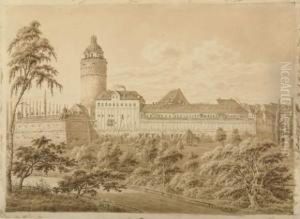Gustave Friedrich Taubert Paintings
Gustave Friedrich Wilhelm Taubert, sometimes spelled as Gustav Taubert, was a German painter, born in 1825 in Potsdam, Germany. He was known for his work as a portrait painter as well as for historical and mythological scenes. Taubert received his education at the Prussian Academy of Arts in Berlin, where he studied under various prominent artists of the time, including Karl Begas and Wilhelm Schadow, who were known for their contributions to the Düsseldorf school of painting.
During his career, Taubert enjoyed the patronage of the Prussian court and other aristocratic clients, which was a testament to his skill and the high regard in which his work was held. Despite this, Taubert did not gain the same level of fame as some of his contemporaries, and as a result, details about his life and career are not as widely documented as those of other artists of the period.
Taubert's style was characterized by a combination of the academic tradition and the emerging realism of the 19th century. His portraits often captured the grandeur and elegance of his subjects, reflecting the tastes and social norms of the time. In addition to portraiture, he painted a number of historical and mythological scenes, which were popular genres during the 19th century, reflecting the Romantic interest in the past and in exotic or fantastical subjects.
Despite his skills and some degree of success during his lifetime, Gustave Friedrich Wilhelm Taubert's work has not had the enduring recognition of some of his peers. His paintings, however, can still be found in art collections and museums that focus on 19th-century German art. Taubert passed away in 1901, and while he may not be as well-remembered as some artists from his era, his contributions to the German art world during his lifetime were significant.
